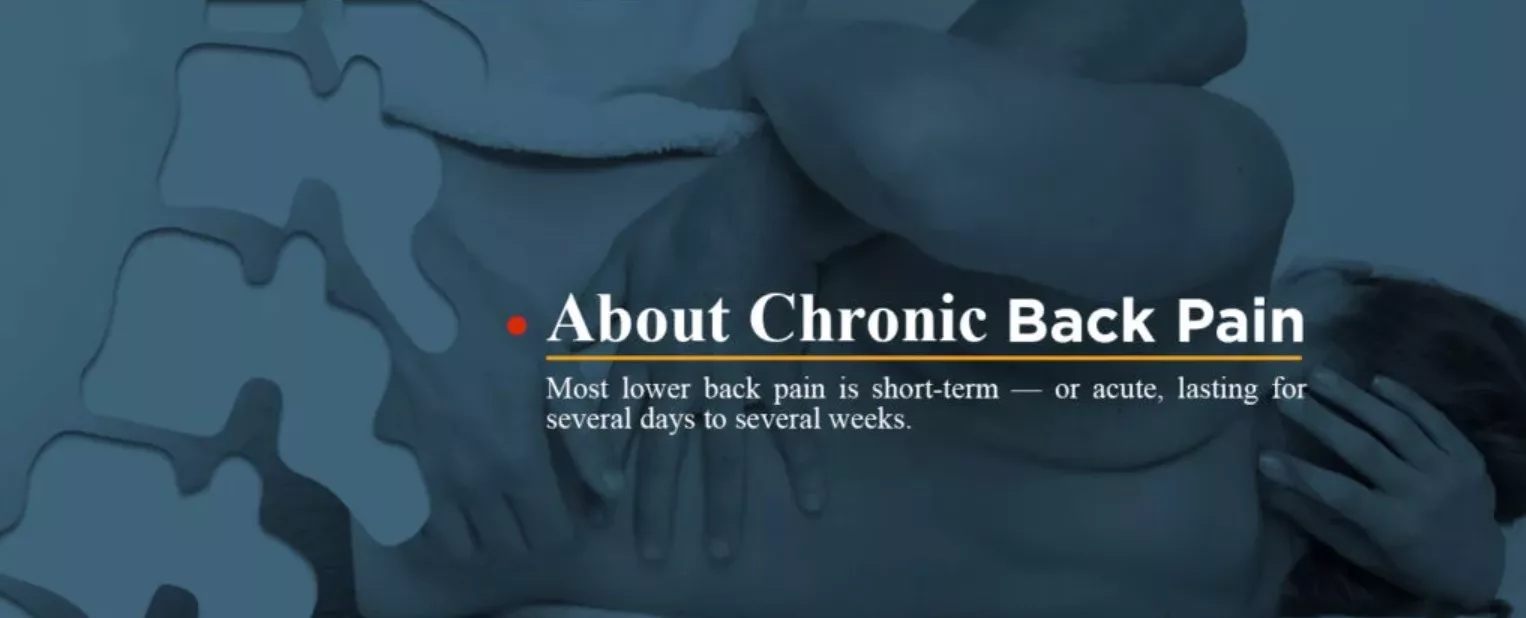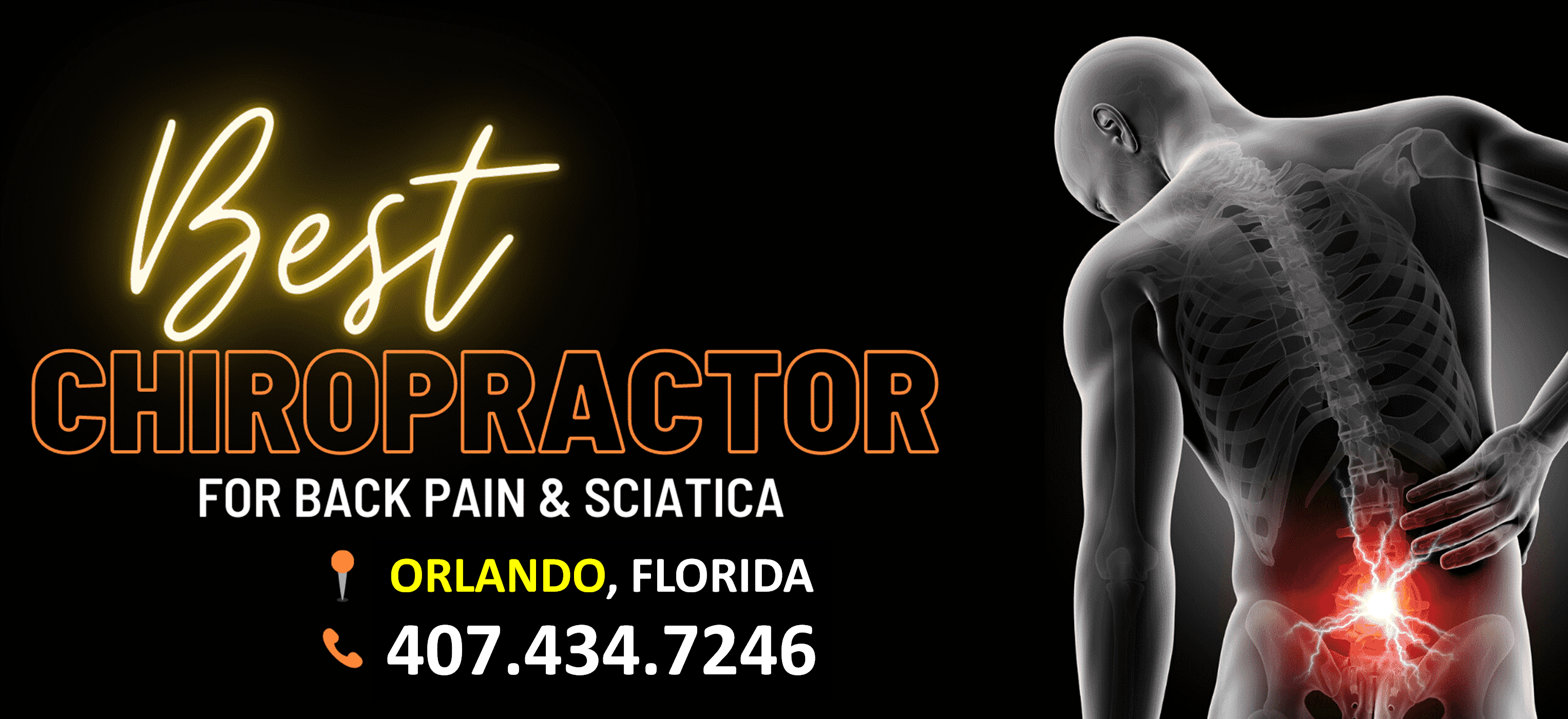Unveiling the Burden: Are You Suffering from Chronic Back Pain?
Chronic back pain is a prevalent and often debilitating condition that affects millions of people worldwide. It transcends age, gender, and socio-economic boundaries, significantly impacting the daily lives and well-being of those who endure it. In this blog post, we delve into the multifaceted landscape of chronic back pain, aiming to unravel its complexities, understand its various causes, and provide a roadmap for effective management and relief.
Understanding Chronic Back Pain

Chronic back pain is a pervasive and challenging condition that affects millions of people worldwide. Unlike acute back pain, which often results from a specific injury or trauma and resolves with time, chronic back pain persists for 12 weeks or more, significantly impacting an individual’s daily life, productivity, and overall well-being. The duration and persistence of chronic back pain make it a distinct and challenging condition that can significantly impact an individual’s quality of life. It may affect various regions of the back, including the upper, middle, or lower back. Unlike acute pain, chronic back pain often persists beyond the expected healing time for a typical injury and may involve complex interactions of physical, psychological, and lifestyle factors.
Causes and Risk Factors of Chronic Back Pain

Chronic back pain is a complex condition with various contributing factors that can lead to its development and persistence. Understanding the underlying causes and risk factors is crucial for effective management and prevention. Here is an in-depth exploration of the common causes and risk factors associated with chronic back pain:
1. Poor Posture
One of the leading contributors to chronic back pain is poor posture. In an era dominated by sedentary lifestyles and prolonged hours spent sitting at desks or hunched over screens, the spine is subjected to unnatural stress. Over time, this can lead to muscle imbalances, misalignment, and chronic back pain.
2. Muscle or Ligament Strain
Engaging in activities that involve overexertion, heavy lifting, or sudden awkward movements can strain the muscles and ligaments of the back. Failure to address this strain adequately may contribute to the development of chronic pain over time.
3. Structural Issues
Various structural issues within the spine can contribute to chronic back pain. Conditions such as herniated discs, spinal stenosis, and degenerative disc disease can lead to persistent discomfort, necessitating medical intervention for effective management.
4. Age-Related Changes
As the body ages, the spine undergoes natural wear and tear. This process can result in age-related conditions such as osteoarthritis and osteoporosis, both of which are associated with chronic back pain.
5. Inactive Lifestyle
A sedentary lifestyle devoid of regular exercise weakens the muscles that support the spine. This lack of physical activity not only contributes to the development of chronic back pain but also hinders the body’s ability to recover and heal.
6. Obesity
Carrying excess weight places additional stress on the spine, particularly in the lower back. Obesity is a significant risk factor for the development and persistence of chronic back pain, making weight management an essential aspect of prevention and treatment.
7. Psychological Factors
The mind-body connection plays a crucial role in chronic back pain. Stress, anxiety, and depression can exacerbate pain, creating a vicious cycle where emotional well-being influences physical discomfort. Addressing mental health is paramount in managing and alleviating chronic back pain.
8. Occupational Factors
Certain occupations, characterized by prolonged periods of sitting, heavy lifting, or repetitive movements, increase the risk of chronic back pain. Implementing ergonomic adjustments in the workplace is crucial for prevention and overall spinal health.
How to Manage Chronic Back Pain?

Managing chronic back pain requires a comprehensive approach that addresses both the physical and psychological aspects of the condition. Here are various strategies and interventions that can be effective in the management of chronic back pain:
1. Physical Therapy
- Exercise Programs: Tailored exercises designed to strengthen the core muscles, improve flexibility, and promote better posture can alleviate chronic back pain.
- Manual Therapy: Techniques like massage, joint mobilization, and spinal manipulation performed by a qualified physical therapist can help reduce pain and improve function.
2. Medication
- Over-the-Counter Pain Relievers: Nonsteroidal anti-inflammatory drugs (NSAIDs), such as ibuprofen or naproxen, can help reduce inflammation and alleviate pain.
- Prescription Medications: In some cases, stronger medications, including muscle relaxants or analgesics, may be prescribed to manage chronic back pain.
3. Heat and Cold Therapy
- Heat Packs: Applying heat to the affected area increases blood flow, relaxes muscles, and can provide relief from chronic back pain.
- Cold Packs: Cold therapy can help reduce inflammation and numb the area, offering relief for some individuals.
4. Lifestyle Modifications
- Maintain a Healthy Weight: Losing excess weight can reduce stress on the spine, potentially alleviating chronic back pain.
- Regular Exercise: Engaging in low-impact activities like swimming, walking, or cycling helps maintain overall spine health.
- Ergonomic Adjustments: Ensuring proper ergonomics in the workplace and at home can prevent worsening of chronic back pain.
5. Posture Improvement
- Conscious Posture Control: Being mindful of maintaining good posture, especially during prolonged periods of sitting or standing, can prevent the development or worsening of chronic back pain.
- Ergonomic Furniture: Using ergonomic chairs and desks can support proper posture and reduce strain on the back.
6. Weight Management
- Balanced Diet: Adopting a balanced and nutritious diet contributes to weight management, reducing stress on the spine.
- Weight Loss Programs: For individuals with obesity-related chronic back pain, supervised weight loss programs can be beneficial.
7. Stress Reduction Techniques
- Mind-Body Practices: Techniques such as meditation, deep breathing exercises, and progressive muscle relaxation can help manage stress and alleviate psychological factors contributing to chronic back pain.
- Yoga and Tai Chi: These mind-body exercises not only promote relaxation but also improve flexibility and strength.
8. Cognitive-Behavioral Therapy (CBT)
- CBT is a psychological intervention that helps individuals identify and change negative thought patterns and behaviors related to chronic pain. It can be effective in managing the psychological aspects of chronic back pain.
9. Biofeedback
- Biofeedback involves using electronic monitoring to teach individuals how to control physiological processes, such as muscle tension, to reduce pain.
10. Invasive Interventions
- Epidural Steroid Injections: Injections of corticosteroids into the epidural space can help reduce inflammation and provide relief for certain types of chronic back pain.
- Surgery: In cases where conservative measures are ineffective, surgery may be considered, particularly for structural issues like herniated discs or spinal stenosis.
11. Acupuncture
- Acupuncture involves the insertion of thin needles into specific points on the body and has been shown to provide relief for some individuals with chronic back pain.
12. Supportive Therapies
- Chiropractic Care: Spinal adjustments performed by chiropractors can help alleviate chronic back pain for some individuals.
- Massage Therapy: Professional massage can promote relaxation, improve blood circulation, and reduce muscle tension associated with chronic back pain.
13. Self-Care Techniques
- Regular Sleep: Adequate and quality sleep supports the body’s ability to heal and recover.
- Hydration: Staying well-hydrated is essential for overall health, including the health of spinal discs.
It’s crucial to note that the effectiveness of these management strategies can vary among individuals. A personalized approach, often guided by healthcare professionals, is essential to address the unique factors contributing to each person’s chronic back pain. Integrating multiple strategies and maintaining consistency in their application is often key to successful chronic back pain management.
Seeking Professional Help for Chronic Back Pain

While lifestyle modifications and self-care strategies can contribute to the management of chronic back pain, it is crucial to seek professional medical advice for a thorough evaluation. A healthcare provider can conduct diagnostic tests, determine the underlying cause of the pain, and recommend an appropriate treatment plan tailored to the individual’s specific needs.
Holistic Approach to Chronic Back Pain

Chronic back pain is a complex and multifaceted condition that often requires a holistic approach to achieve effective management and long-term relief. Integrating various strategies, including physical therapy, medication, lifestyle modifications, and psychological support, is key to addressing the diverse factors contributing to chronic back pain.
Conclusion: Chronic Back Pain

Chronic back pain is not merely a physical ailment but a pervasive issue that impacts the overall quality of life. Recognizing the interconnected nature of the contributing factors and implementing a comprehensive approach to management is essential. By understanding the causes, risk factors, and effective strategies for relief, individuals can reclaim control over their lives, break free from the shackles of chronic back pain, and embark on a journey towards comfort, mobility, and vitality. Remember, seeking professional guidance is not a sign of weakness but a proactive step towards a life free from the burden of chronic back pain. It’s time to prioritize your well-being and embrace a future with a healthier, pain-free back.
Best Chiropractor Near Me in Orlando, Florida
CALL NOW +1-407-434-7246
If you have suffered any type of injury or have been experiencing pain that just won’t go away regardless of what you do, then all you have to do is call and speak with our friendly staff. Find Best Chiropractic Care in Orlando, Florida. Moreover, our team can help you get the treatment you need and ensure that the pain you experience is alleviated – once and for all.
We are proud to serve the areas of Orlando, Altamonte Springs, Haines City, Plant City, Kissimmee, Winter Haven, and Ocala.
Contact us for Chiropractor near me in Orlando, Florida for an Appointment Today.
Does chronic back pain go away?
Chronic back pain symptoms typically come on gradually and are long-lasting, sticking around for more than six weeks. As we mentioned, chronic pain usually isn't caused by a specific event or injury nor does it just go away or heal itself without medical treatment.
What can be done for extreme back pain?
Use cold packs to help relieve some back pain and hot packs to increase blood flow and promote healing in the muscles and tissues of the back. Avoid bedrest; instead, limit activities or exercise that cause pain. Gradually increase physical activity as tolerated.
What is the average age of chronic back pain?
According to Dr. Tingan, most people start noticing back pain between the ages of 40 and 60. People that are overweight and over 30 are at increased risk of suffering from back pain in the lower extremities. About 33% of adult women experience lower back pain symptoms, though 25% of the adult male population are the same.
Is chronic back pain mental?
Psychological and social factors not only affect back pain itself but also how much the pain impacts on one's life. For example, the presence of depressive symptoms can make back pain worse and increase the disability associated with back pain.
How do I know if my back pain is muscular or spinal?
Your spinal disc is at the bottom of your back, so if you have pain in your lower back, you may assume it is a slipped disc. Furthermore, the feeling of pain will differ between the two. Muscle pain will feel like post-workout soreness, while disc pain will feel debilitating and tingly.



